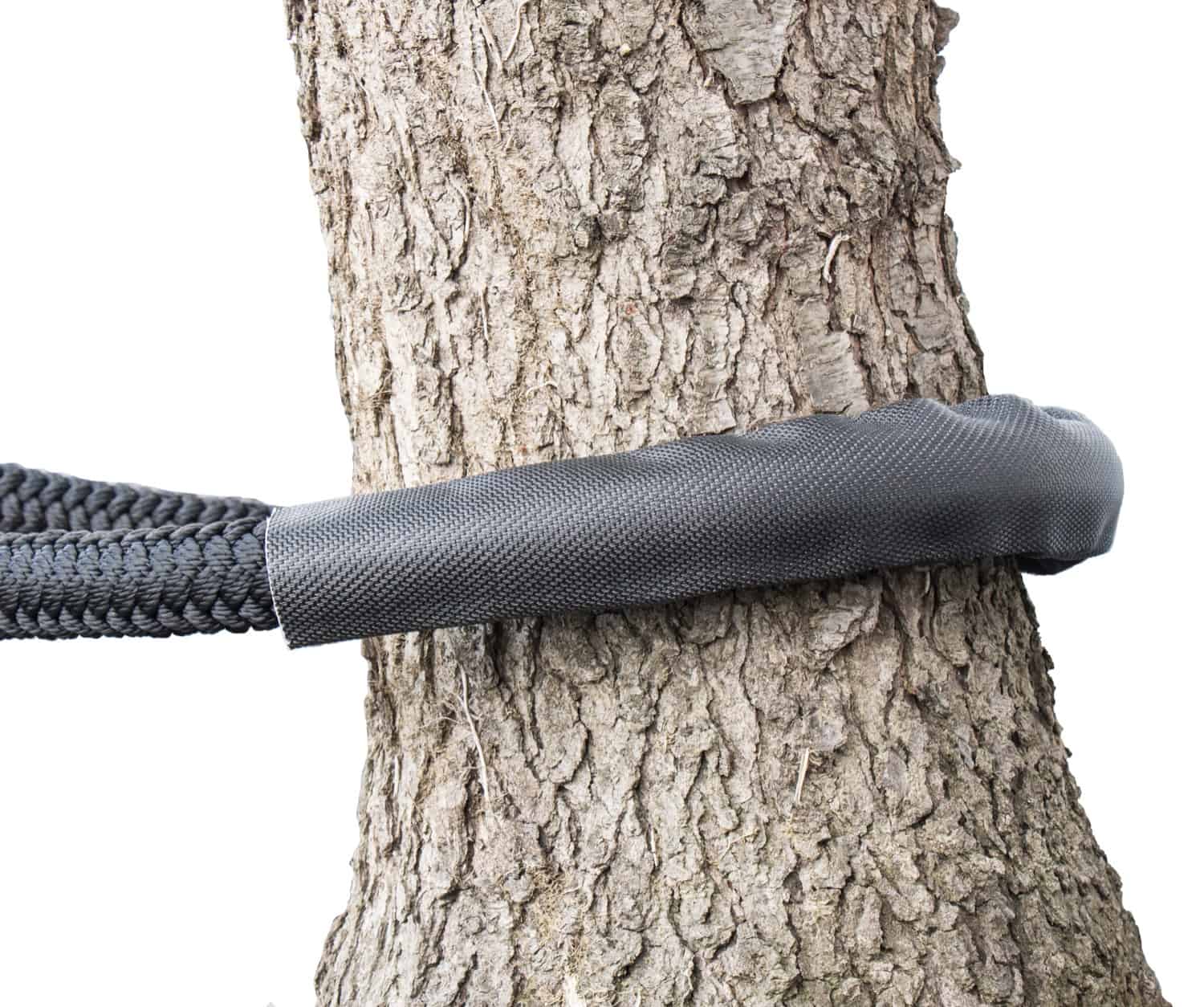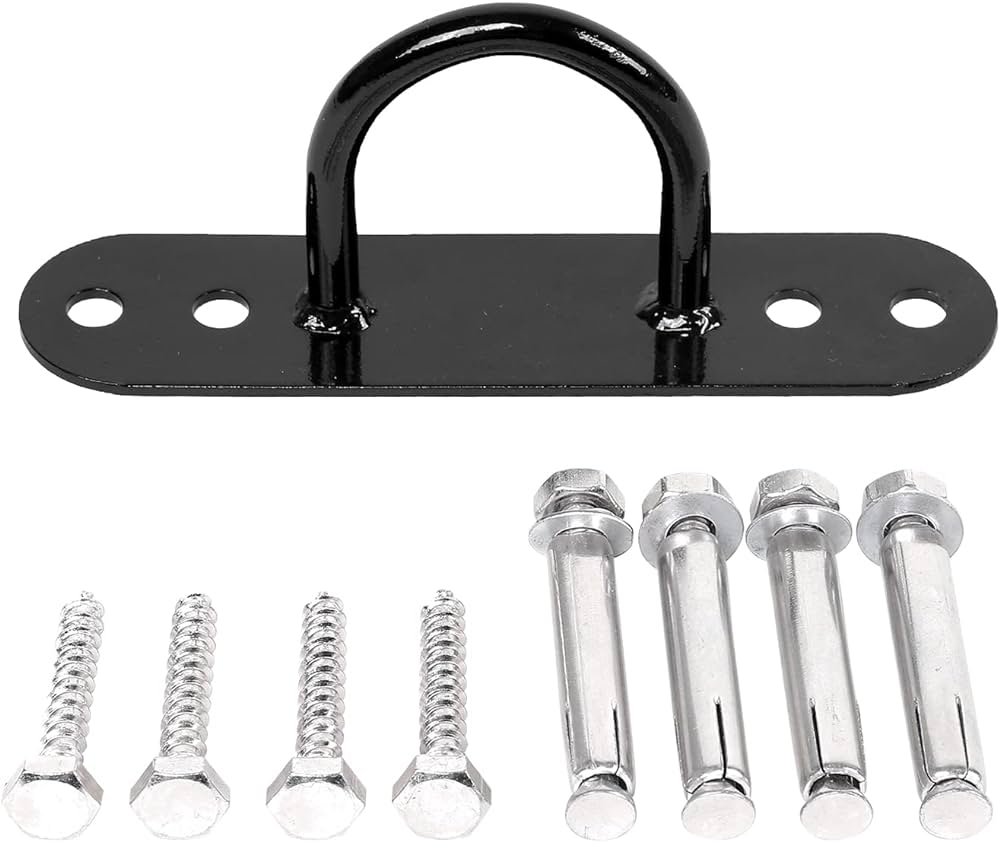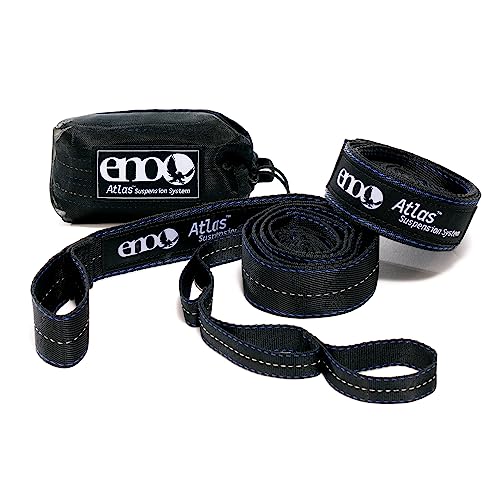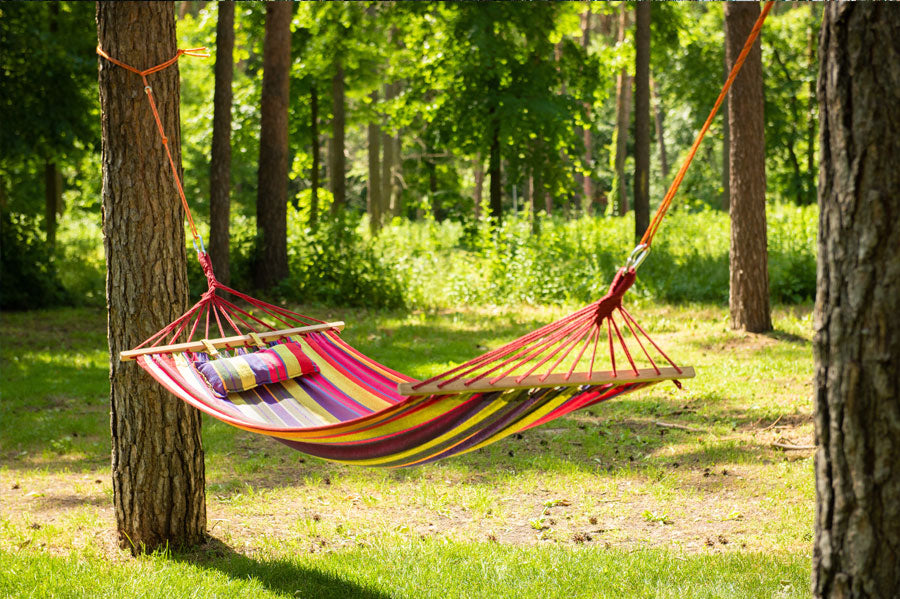- 8 Airplane Footrest Hammock!Travel comfortably - October 9, 2023
- top 7 Pool Float Water Hammock for a Relaxing Summer - October 9, 2023
- top 5 Space SaverSingle Hammock Stand Maximize Comfort and Space - October 9, 2023
Hammock straps are more secure and safer for trees compared to rope. Not only do they distribute weight over a larger area, preventing long-term damage to trees, but they also eliminate the need for complicated knots.
Hammocks are a popular and relaxing way to enjoy the outdoors, but when it comes to hanging them, choosing the right method is essential. Two common options for hanging hammocks are using hammock straps or rope. While both methods can suspend a hammock, they have significant differences in terms of security and tree safety.
We will discuss the advantages of hammock straps over rope, highlighting why hammock straps are a better choice for both safety and ease of use. By understanding the benefits of hammock straps, you can make an informed decision and set up your hammock with confidence. So let’s dive in and explore the strengths of hammock straps compared to rope.

Credit: aerobis.com
Introduction To Hammock Straps And Rope
Brief Overview Of Hammock Straps And Rope
When it comes to hanging a hammock, one of the most important decisions you’ll have to make is choosing the right suspension system. Two popular options are hammock straps and rope. Let’s take a closer look at each of these options and their unique characteristics.
Importance Of Choosing The Right Suspension System
Choosing the right suspension system for your hammock is crucial for ensuring a safe and comfortable experience. It not only affects the stability and support of your hammock but also plays a significant role in protecting the trees or anchors you use.
Now, let’s delve into the differences between hammock straps and rope.
Hammock Straps
Hammock straps, also known as tree straps, are wide flat bands made of strong polyester or nylon webbing. They typically come with loops at both ends, making them easy to set up and adjust. Here are some key advantages of using hammock straps:
- Secure and reliable: Hammock straps provide a secure and reliable connection between your hammock and the anchor points, ensuring your safety while lounging.
- Tree-friendly: Unlike ropes, hammock straps distribute the weight of the hammock over a larger surface area, minimizing the impact on the trees or anchor points. This helps prevent damage to the bark and ensures the long-term health of the trees.
- Easy setup: Hammock straps are designed for easy installation. Simply wrap the strap around the anchor point, pass one end through the loop at the other end, and attach your hammock. No complicated knots or fancy skills required.
- Adjustability: With multiple loops along the length of the strap, you can easily adjust the height and tension of your hammock to your desired comfort level.
Rope
Traditional rope has been a popular choice for hanging hammocks for many years. However, there are some notable downsides to using rope as a suspension system:
- Less secure: Compared to hammock straps, ropes are generally less secure and may require additional knots or hitches to ensure stability. This can be time-consuming and may not provide the same level of confidence in your hammock setup.
- Tree damage: Ropes can cause more harm to the trees or anchor points due to their smaller surface area of contact. They may dig into the bark and weaken the tree’s structure, potentially leading to long-term damage.
- Complicated setup: Setting up a hammock with ropes often involves intricate knots and proper tensioning techniques. If you’re not experienced with knot tying, it could be a frustrating process to achieve the desired tightness and stability.
When it comes to choosing between hammock straps and rope, it’s clear that hammock straps offer numerous advantages in terms of security, tree-friendliness, ease of setup, and adjustability. By investing in a good set of hammock straps, you can enjoy a safe and comfortable hammocking experience while preserving the natural environment.
Benefits Of Hammock Straps
Benefits of Hammock Straps
Hammock straps offer a variety of benefits that make them the ideal choice for hanging your hammock. From increased stability and safety to easy setup and adjustment, hammock straps are a game-changer. In addition, they are tree-friendly and eco-friendly, ensuring minimal impact on the environment. Let’s dive into the specifics of these benefits:
Increased Stability And Safety
Hammock straps provide superior stability and safety compared to traditional rope. The wide and flat design of hammock straps distributes the weight of the hammock more evenly across the tree trunk. This not only prevents unnecessary stress on the tree but also reduces the risk of the hammock slipping or sagging during use. With hammock straps, you can enjoy a worry-free lounging experience.
Easy Setup And Adjustment
Setting up a hammock with straps is a breeze. Unlike rope, hammock straps don’t require any complicated knots or intricate weaving techniques. Simply wrap the straps around the trees, attach the hammock carabiners, and you’re good to go. The adjustability of hammock straps makes it easy to find the perfect hanging height and tension for your comfort. Even if you’re a beginner, you’ll have your hammock up and ready in no time.
Tree-friendly And Eco-friendly
Hammock straps are not only designed with your comfort in mind but also with the wellbeing of trees and the environment. The wide surface area of hammock straps reduces the pressure exerted on trees, minimizing the potential for long-term damage to the bark and trunk. Additionally, hammock straps are made from durable and eco-friendly materials that are gentle on trees and leave no trace behind. By using hammock straps, you can enjoy nature responsibly without harming the environment.
Limitations Of Hammock Straps
Hammock straps are a popular choice for hanging hammocks due to their ease of use and durability. However, it’s important to consider their limitations in comparison to rope. Understanding these limitations can help you make an informed decision when choosing the right suspension system for your hammock.
Limited Adjustability Compared To Rope
One of the main limitations of hammock straps is their limited adjustability compared to rope. Hammock straps typically come with pre-determined attachment points or loops, which may not offer the same level of flexibility as using rope. With rope, you have the freedom to adjust the height and tension of your hammock to your preference.
Possible Weight Limitations
Another limitation to consider is the possible weight limitations of hammock straps. While hammock straps are generally strong and sturdy, they may have weight restrictions. It is essential to check the manufacturer’s guidelines for the maximum weight capacity of the hammock straps you are using. If you plan on using the hammock for two people or if you are on the heavier side, you may need to opt for stronger straps or consider using rope instead.
Cost Considerations
Cost is an important factor that shouldn’t be overlooked when comparing hammock straps and rope. Hammock straps tend to be more expensive than rope due to their specialized design and materials. However, it is worth noting that hammock straps offer benefits such as ease of setup, tree protection, and increased safety. If these features are crucial to you, the additional cost may be justified.
Advantages Of Rope For Hammock Setup
When it comes to setting up a hammock, there are two popular options: hammock straps and rope. While hammock straps have their own advantages, ropes offer unique benefits that may make them a better choice for some hammock enthusiasts. In this section, we will explore the advantages of rope for hammock setup.
Greater Versatility And Adjustability
Rope provides greater versatility and adjustability compared to hammock straps. With ropes, you have the freedom to adjust the length and height of your hammock to suit your preferences. Whether you prefer a low, relaxing hang during an afternoon nap or a higher hang for scenic views, ropes allow you to easily achieve the desired setup.
Additionally, ropes provide more flexibility in terms of tree spacing. Unlike hammock straps, which typically have pre-set lengths, ropes can be cut to any desired length, allowing you to set up your hammock between trees of various distances. This makes ropes a great option for hammocking in areas with limited tree options.
Can Be More Budget-friendly
Another advantage of using ropes for hammock setup is cost-effectiveness. Ropes are generally more budget-friendly than hammock straps. While high-quality hammock straps can be quite expensive, ropes can often be purchased at a fraction of the cost. This makes ropes a great choice for those on a tight budget.
Moreover, ropes are durable and can withstand regular use without compromising on performance. By choosing ropes for your hammock setup, you can save money without compromising on quality.
Customizable Setup Options
One of the biggest advantages of using ropes for hammock setup is the ability to customize your setup options. With ropes, you have the freedom to experiment with different knot techniques and configurations to achieve your desired hammock hang. This allows you to create a setup that perfectly suits your comfort and stability preferences.
Whether you prefer a basic knot like a simple overhand knot or a more advanced knot like the bowline, ropes offer endless possibilities for customization. Additionally, ropes allow for easy adjustments and modifications, making it easy to fine-tune your setup as needed.
In conclusion, while hammock straps have their own advantages, ropes offer greater versatility, cost-effectiveness, and customizable setup options. By choosing ropes for your hammock setup, you can enjoy the freedom to adjust, experiment, and save money, while still achieving a comfortable and secure hang.
Drawbacks Of Using Rope
Potential Damage To Trees
Using rope to hang a hammock can pose potential damage to trees. The thinness and rough texture of rope can strip and weaken the bark of trees, making them susceptible to life-threatening damage. Over time, the repeated stress of the rope against the tree can cause irreversible harm. This not only affects the aesthetic appeal of the tree but also compromises its overall health.
Requires Knowledge Of Various Knots
When using rope, a hammock setup requires knowledge of various knots to ensure stability and safety. Different types of knots have different levels of complexity and strength. Choosing the wrong knot or not tying it properly can lead to an unstable hammock, increasing the risk of accidents. It takes time and practice to master the art of knot tying, and not everyone may have the patience or interest to learn these techniques.
Higher Risk Of Instability And Accidents
As mentioned earlier, using rope for hanging a hammock increases the risk of instability and accidents. Rope is prone to stretching and loosening over time, especially when exposed to weather elements. Additionally, knots tied with rope may come undone when subjected to continuous use or weight. A hammock setup using rope requires constant monitoring and readjustment to maintain stability and prevent accidents.
In conclusion, while rope may be a cost-effective alternative to hammock straps, it comes with several drawbacks that can compromise the safety and well-being of both trees and hammock users. To ensure a secure and hassle-free hammock experience, investing in quality hammock straps is highly recommended.
Factors To Consider In Choosing Between Hammock Straps And Rope
When it comes to setting up your hammock, one of the key decisions you’ll need to make is whether to use hammock straps or rope. Both options have their own advantages and factors that need to be considered before making a choice. In this section, we’ll explore the key factors that should influence your decision-making process.Desired Level Of Adjustability And Versatility
If you value adjustability and versatility in your hammock setup, hammock straps are the way to go. Unlike rope, hammock straps offer multiple attachment points along their length, allowing you to easily adjust the height and tension of your hammock. This means you can quickly find the perfect position for optimal comfort and relaxation. Hammock straps also provide more flexibility in terms of where you can set up your hammock, as they can be wrapped around a variety of anchor points such as trees, posts, or even rocks.On the other hand, if you prefer a more traditional and fixed setup, rope may be a suitable option. While rope doesn’t offer the same level of adjustability as hammock straps, it can still provide a secure and stable anchor point for your hammock. Rope can be tied with various knots to achieve the desired height and tension, giving you a sense of control over your hammock setup.Environmental Impact And Tree-friendliness
When it comes to protecting the environment and minimizing your impact on trees, hammock straps are the clear winner. Hammock straps are wider than ropes, which helps distribute the weight of the hammock over a larger surface area. This reduces the pressure on trees, minimizing the risk of damage to their bark and branches. Additionally, hammock straps are designed to be tree-friendly, as they are made from materials that are gentle on trees and less likely to cause harm.In contrast, rope has the potential to cause more damage to trees due to its smaller surface area and potential for friction. Rope can strip the bark off trees and weaken their structure, making them more susceptible to long-term damage. If preserving the health and well-being of trees is a priority for you, choosing hammock straps is a more environmentally conscious choice.Usage Scenario And Specific Needs
Consider your specific needs and intended usage scenario when choosing between hammock straps and rope. If you’re an avid camper or outdoor enthusiast, hammock straps are generally more recommended due to their ease of use and versatility. Hammock straps are designed for quick and hassle-free setup, making them ideal for camping trips, backpacking adventures, or any activity where convenience is key.Alternatively, if you primarily plan to use your hammock in your backyard or in a specific location where you have more control over the setup, using rope may be a suitable option. Rope provides a more traditional aesthetic and can give your backyard a rustic and cozy feel. However, keep in mind that rope may require more time and effort to set up compared to hammock straps.In conclusion, the choice between hammock straps and rope ultimately depends on your personal preferences and priorities. If adjustability, versatility, tree-friendliness, and ease of use are important to you, hammock straps are the recommended choice. On the other hand, if you prefer a traditional setup and don’t mind investing more time in the setup process, rope can still provide a secure and comfortable hammocking experience.Tips For Proper Use Of Hammock Straps And Rope
When it comes to hammock setup, one of the crucial decisions to make is whether to use hammock straps or rope. Both options have their advantages and disadvantages, but in terms of convenience, safety, and tree preservation, hammock straps are often the preferred choice. Here are some important tips to ensure the proper use of hammock straps and rope:
Ensure Secure Attachment To Anchor Points
Whether you are using hammock straps or rope, it is crucial to ensure a secure attachment to the anchor points. This involves finding sturdy trees or other structures that can support the weight of the hammock. With hammock straps, it is as simple as wrapping the straps around the trees and using the provided loops to connect the hammock. On the other hand, when using rope, you need to tie reliable knots that won’t come undone. It is recommended to use proven knotting techniques like the bowline knot or the trucker’s hitch to achieve maximum security.
Maintain Proper Tension For Comfort And Safety
Another important aspect of hammock setup is maintaining proper tension. Whether you are using hammock straps or rope, it is necessary to achieve the right amount of tension for both comfort and safety. A loose hammock can be uncomfortable and might make it difficult to find a good sleeping position. On the other hand, an overly tight hammock can put unnecessary strain on the anchor points and increase the risk of failure. It is recommended to adjust the tension so that the hammock sags slightly in the middle when you lie in it. This ensures a comfortable and secure sleeping experience.
Regular Inspection For Wear And Tear
Regardless of whether you are using hammock straps or rope, it is essential to regularly inspect them for wear and tear. Over time, exposure to the elements and continuous use can weaken the materials. Look for signs of fraying, abrasion, or any other damage that could compromise the strength and integrity of the straps or rope. Additionally, inspect the stitching and loops on hammock straps to ensure they are still in good condition. If you notice any signs of damage, it is important to replace the affected straps or rope before using the hammock again.
| Hammock Straps | Rope |
|---|---|
| Wrap around trees and use loops for easy attachment | Tie secure knots using proven techniques like the bowline or trucker’s hitch |
| Adjust tension to achieve a comfortable sag in the middle | Ensure proper tension for comfort and safety |
| Regularly inspect for wear and tear, replace if necessary | Check for damage or weakening, replace if needed |
In conclusion, hammock straps offer several advantages over rope when it comes to setup, convenience, and tree preservation. However, regardless of your choice, it is crucial to follow these tips for the proper use of hammock straps and rope. By ensuring secure attachment, maintaining proper tension, and regularly inspecting for wear and tear, you can enjoy a safe and comfortable hammock experience.
Frequently Asked Questions For Hammock Straps Vs Rope
What Is The Difference Between Hammock Straps And Huggers?
Hammock straps are longer with a loop sewn on only one end, while huggers are shorter with loops sewn on both ends. The tree straps wrap around the tree and the free end extends to the hammock, while huggers just wrap around the tree.
Tree straps are more secure and distribute weight better, making them safer for trees.
How Strong Are Hammock Straps?
Hammock straps are strong and safe for trees. They distribute the weight of the hammock over a larger area, preventing long-term damage to the tree. They are more secure than ropes and do not require complicated knots. Using hammock straps is a better and safer option for hanging hammocks.
Are Hammock Straps Safe For Trees?
Hammock straps are safe for trees as they distribute the weight of the hammock over a larger area, reducing damage to the bark. They are more secure and don’t require complicated knots like ropes. Using hammock straps is a better and safer option for trees.
What Kind Of Rope Do You Use To Hang A Hammock?
Hammock straps are safer and more secure than ropes for hanging a hammock. They distribute the weight over a larger area, reducing the risk of long-term damage to trees. Unlike ropes, they don’t require complicated knots and are easier to use.
Q: What Is The Difference Between Hammock Straps And Tree Huggers?
A: Huggers are shorter with loops sewn on both ends, while tree straps are longer with a loop sewn on only one end.
Q: How Strong Are Hammock Straps?
A: Hammock straps are designed to be strong and reliable, capable of supporting the weight of individuals as well as providing stability for the hammock.
Conclusion
When it comes to hanging your hammock, using hammock straps is definitely the way to go. Hammock straps provide more security, as they don’t require complicated knots and distribute the weight of the hammock over a greater area, which is safer for trees.
In contrast, using ropes can lead to long-term damage and harm the bark of the tree. So, if you want a hassle-free and tree-friendly hang, hammock straps are the clear winner.





